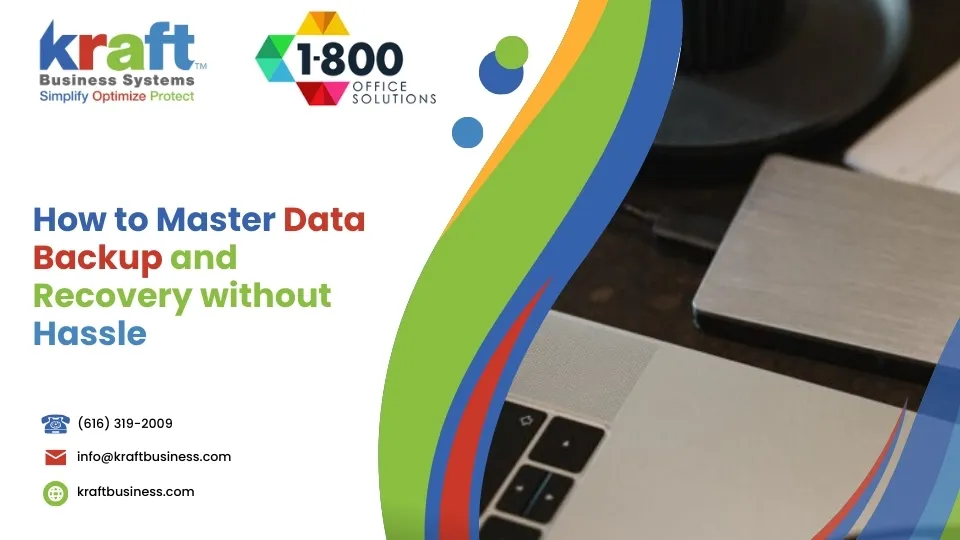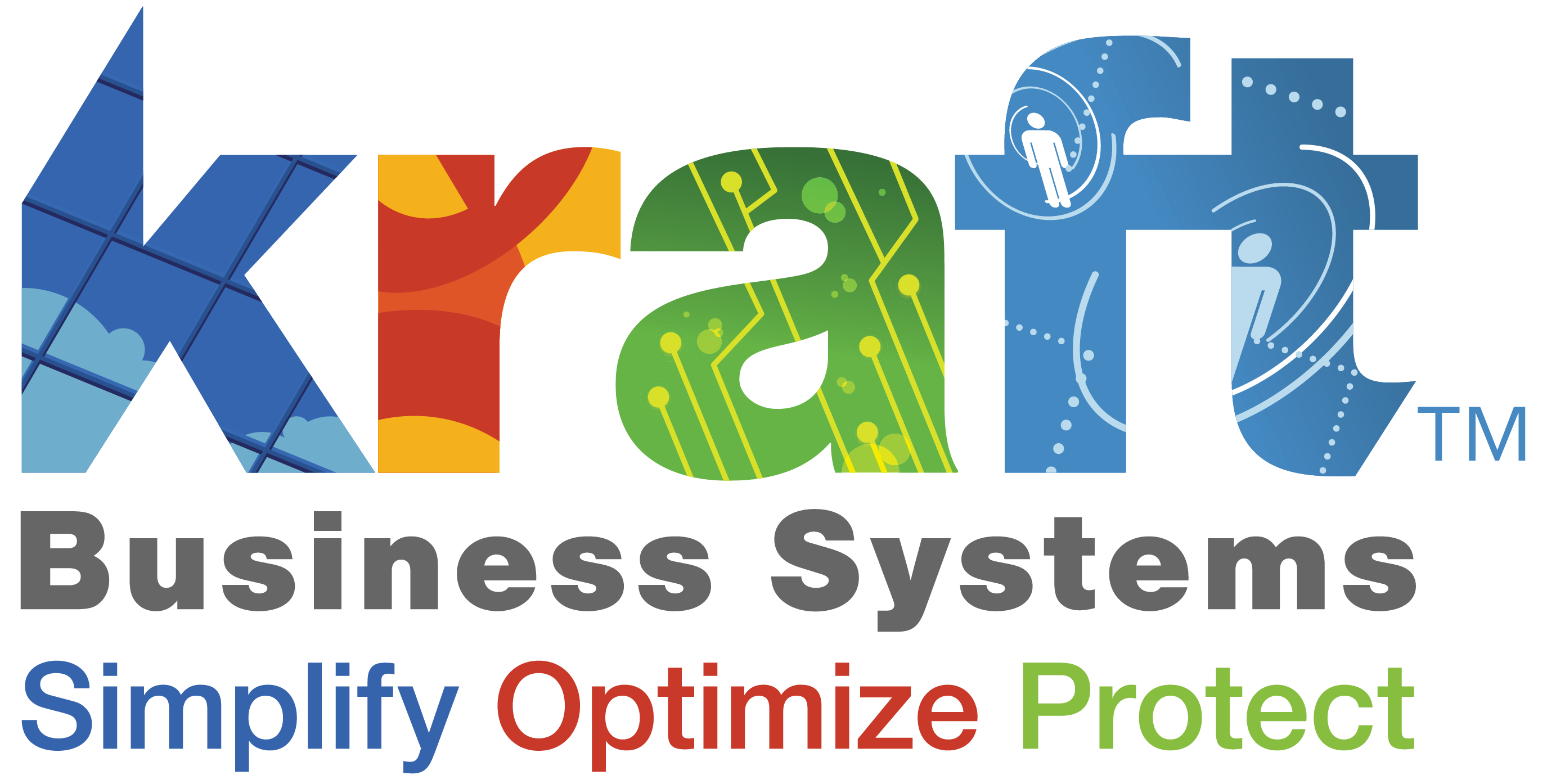Securing Your Business with Data Backup and Recovery
Data backup and recovery are essential for keeping your business safe from unexpected data loss. Protecting your data ensures that your business can continue to operate smoothly, even during a disaster. Here’s what you need to know:
- Data Protection: Backing up your data means making secure copies to shield it from threats like natural disasters and cyberattacks.
- Business Continuity: Recovery plans enable you to quickly restore lost data, minimizing downtime and maintaining business operations.
- Peace of Mind: Having a reliable backup and recovery strategy acts like an insurance policy for your digital assets.
Understanding and implementing these processes means your business is better prepared for any situation, keeping your operations running with minimal disruption.
Understanding Data Backup and Recovery
When it comes to data backup and recovery, understanding the processes involved is crucial. Let’s break it down into simple terms:
Backup Process
The backup process is like creating a safety net for your data. It involves making copies of important information and storing them securely. These copies can be on physical devices like external hard drives or in the cloud. The goal? To ensure that if your primary data is lost or corrupted, you have a reliable copy to fall back on.
There are different types of backups:
- Full Backup: A complete copy of all your data. It’s thorough but takes time and storage space.
- Incremental Backup: Only backs up changes made since the last backup, saving time and space.
- Differential Backup: Backs up changes since the last full backup, offering a balance between full and incremental.
Recovery Process
Recovery is the action of bringing your data back to life after a loss. Think of it as retrieving your safety net. When data is lost or damaged, recovery involves restoring it from the backup copies to its original or a new location.
The speed and success of recovery depend on your backup method. For instance, incremental backups might take longer to restore because each change must be reapplied in sequence. On the other hand, full backups allow for quicker restoration but require more storage.
Data Integrity
Data integrity ensures that your information remains accurate and unchanged during the backup and recovery processes. It’s like making sure your safety net has no holes. Maintaining data integrity means that when you restore your data, it’s
Types of Data Backup
When it comes to protecting your business’s data, choosing the right backup method is key. Let’s explore three main types of data backups: full backup, incremental backup, and differential backup. Each has its own strengths and can be custom to fit your organization’s needs.
Full Backup
A full backup is the most comprehensive option. It involves copying all of your data, every single time you perform a backup. This method is like hitting the reset button, ensuring that you have a complete snapshot of your data at that moment.
- Pros: Easy to restore since you have everything in one place.
- Cons: Time-consuming and requires a lot of storage space.
Full backups are often performed less frequently due to their size and time demands. They are typically used in combination with other types of backups to balance thoroughness and efficiency.
Incremental Backup
An incremental backup captures only the changes made since the last backup, whether it was full or incremental. Think of it as a timesaver, recording only what’s new or altered.
- Pros: Quick to perform and requires minimal storage.
- Cons: Restoration can be slow because you need to piece together data from multiple backups.
This method is efficient for organizations that need frequent backups without the heavy storage burden. However, keep in mind that restoring data means going through each incremental backup in sequence.
Differential Backup
A differential backup saves all the changes made since the last full backup. It’s like a middle ground between full and incremental backups.
- Pros: Faster to restore than incremental since you only need the last full and the latest differential backup.
- Cons: Can grow larger over time, using more storage than incremental backups but less than full ones.
Differential backups are ideal for situations where you want a balance between storage use and restoration speed. They provide a good compromise, especially when regular full backups are not feasible.
Choosing the right backup type depends on your data’s size, change frequency, and how quickly you need to restore it. Implementing a mix of these backup types can offer robust protection and ensure your data is always safe and accessible.
Next, we’ll dive into implementing effective backup strategies, like the 3-2-1 strategy and how cloud backups can play a role in securing your data.
Implementing Effective Backup Strategies
Once you’ve chosen the type of backup that suits your needs, it’s time to put it into action with effective strategies. Let’s explore some tried-and-true methods to keep your data safe and sound, like the 3-2-1 strategy, cloud backup, and offsite storage.
The 3-2-1 Strategy
The 3-2-1 strategy is a simple yet powerful rule for data protection. Here’s how it works:
- Three copies of your data: Keep one primary copy and two backups. This ensures redundancy.
- Two different storage media: Use two types of media, like an external hard drive and cloud storage. This reduces the risk of data loss if one medium fails.
- One copy offsite: Store one backup offsite, away from your primary location. This protects your data from local disasters like fires or floods.
This strategy is a cornerstone of effective data backup, offering a balance of accessibility and security.
Cloud Backup
Cloud backup is a modern way to keep your data safe. By storing your data in the cloud, you gain several advantages:
- Accessibility: Access your data from anywhere with an internet connection. This is perfect for remote work or accessing files on the go.
- Scalability: Easily adjust your storage needs as your business grows. No need for large upfront investments in hardware.
- Security: Cloud providers offer advanced security features like encryption and access controls. This helps protect your data from cyber threats.
Cloud backup can be a key part of your data protection plan, especially when combined with other methods like the 3-2-1 strategy.
Offsite Storage
Offsite storage involves keeping a copy of your data in a different physical location. This could be a dedicated data center or a secure facility. The benefits include:
- Disaster Recovery: In case of a local disaster, your data is safe and can be quickly restored from the offsite location.
- Compliance: Some regulations require data to be stored in specific locations. Offsite storage helps meet these requirements.
- Security: Offsite facilities often have improved security measures, including biometric access and surveillance.
While offsite storage might seem like an extra step, it’s an essential layer of protection against data loss.
By implementing these strategies, you can significantly improve your data backup and recovery processes. Next, we’ll look into ensuring reliable data recovery and how to minimize downtime during disruptions.
Ensuring Reliable Data Recovery
When disaster strikes, having a reliable disaster recovery plan is crucial. This plan ensures your business can bounce back swiftly and minimize downtime. Let’s explore how you can achieve this with key concepts like recovery time objective (RTO) and recovery point objective (RPO).
What is Disaster Recovery?
Disaster recovery is all about preparing for the unexpected. Whether it’s a cyberattack, natural disaster, or system failure, having a plan in place means you’re ready to restore critical functions quickly.
A well-crafted disaster recovery plan includes:
- Preventive Measures: Steps to prevent disasters before they happen.
- Corrective Measures: Actions to correct issues post-disaster.
- Detective Measures: Tools to detect potential threats early.
These measures work together to safeguard your business, ensuring you can maintain operations even during disruptions.
Understanding RTO and RPO
Two essential components of any disaster recovery plan are RTO and RPO. These metrics help you determine how quickly and effectively you can recover.
- Recovery Time Objective (RTO): This is the maximum amount of time your business can afford to be down after a disaster. For instance, if your RTO is two hours, your systems should be up and running within that time frame. Meeting tight RTOs often means having secondary data easily accessible.
- Recovery Point Objective (RPO): This refers to the maximum age of files you can recover from backup. If your RPO is five hours, you need backups at least every five hours to avoid significant data loss. RPO helps determine your backup frequency.
By setting clear RTO and RPO, you prioritize recovery efforts where they matter most, ensuring minimal impact on your operations.
Strategies for Reliable Recovery
To achieve reliable data recovery, consider these strategies:
- Recovery-in-Place: This method allows you to move backup data to a live state quickly, eliminating the need to transfer data across networks. It’s an efficient way to restore operations without delay.
- Continuous Replication: By continuously replicating data to another location or the cloud, you minimize downtime and have more precise recovery points. This approach is becoming popular for both backup and disaster recovery.
- Testing and Exercises: Regularly test your disaster recovery plan to ensure it meets your RTO and RPO targets. Conduct exercises to familiarize your team with the process, so they’re ready when needed.
Implementing these strategies helps you build a robust disaster recovery plan that protects your business from data loss and downtime.
Next, we’ll address some common questions about data backup and recovery to further improve your understanding.
Frequently Asked Questions about Data Backup and Recovery
What is the difference between backup and recovery?
Backup and recovery are two sides of the same coin, but they serve distinct purposes in data management. Backup is all about creating copies of your data to protect it from loss. Think of it as making a digital photocopy of your important files and storing them safely. This ensures that if the original data is lost or corrupted, you have a backup copy to fall back on.
On the flip side, recovery is the process of restoring your data from those backups. When something goes wrong, like a system crash or data breach, recovery is the act of retrieving and reinstating your data to its original or operational state. It’s like using your digital photocopy to replace a damaged original document.
Together, backup and recovery form a comprehensive strategy to safeguard your data and ensure business continuity.
How often should data backups occur?
The frequency of data backups depends on your organization’s needs and the criticality of your data. The key is aligning your backup frequency with your Recovery Point Objective (RPO)—the maximum acceptable amount of data loss measured in time.
For businesses with crucial data, backups might need to occur multiple times a day. Less critical data could be backed up less frequently, perhaps daily or weekly. Consistent backups are vital for data loss prevention. Regular backups ensure that you can recover recent data and minimize disruption.
Can backup and recovery plans prevent ransomware attacks?
While backup and recovery plans can’t prevent ransomware attacks, they are essential in mitigating their impact. By having up-to-date backups, you can restore your data without paying a ransom, effectively neutralizing the attack’s leverage.
One powerful tool in the fight against ransomware is immutable storage. This storage type ensures that once data is written, it cannot be altered or deleted. It’s like locking your data in a safe that ransomware can’t crack. Immutable backups provide a secure point to restore from, protecting your data from malicious tampering.
By implementing a robust backup and recovery strategy, including immutable storage, you can safeguard your organization against data loss and ransomware threats.
Next, let’s explore how to implement effective backup strategies to further secure your data.
Conclusion
At Kraft Business Systems, we understand that data resilience is not just a buzzword—it’s a necessity for modern businesses. When data drives decisions, ensuring the safety and availability of that data is paramount. Our comprehensive IT solutions are designed to keep your business data secure, accessible, and protected.
Data backup and recovery form the backbone of our IT services. We help businesses implement robust strategies to safeguard against unexpected data loss and ensure swift recovery when needed. Whether it’s through cloud-based solutions, offsite storage, or the 3-2-1 backup strategy, we tailor our services to fit your unique needs.
Our team of experts is dedicated to helping you steer the complexities of data protection. With locations across Michigan, including Grand Rapids and Detroit, we’re always within reach to support your business. We offer not just services, but peace of mind—knowing your data is in safe hands.
With Kraft Business Systems, you’re not just choosing an IT provider; you’re choosing a partner committed to your success. Let us help you build a resilient data strategy that keeps your business moving forward, no matter what challenges arise.
For more information, visit our website at Kraft Business Systems.








